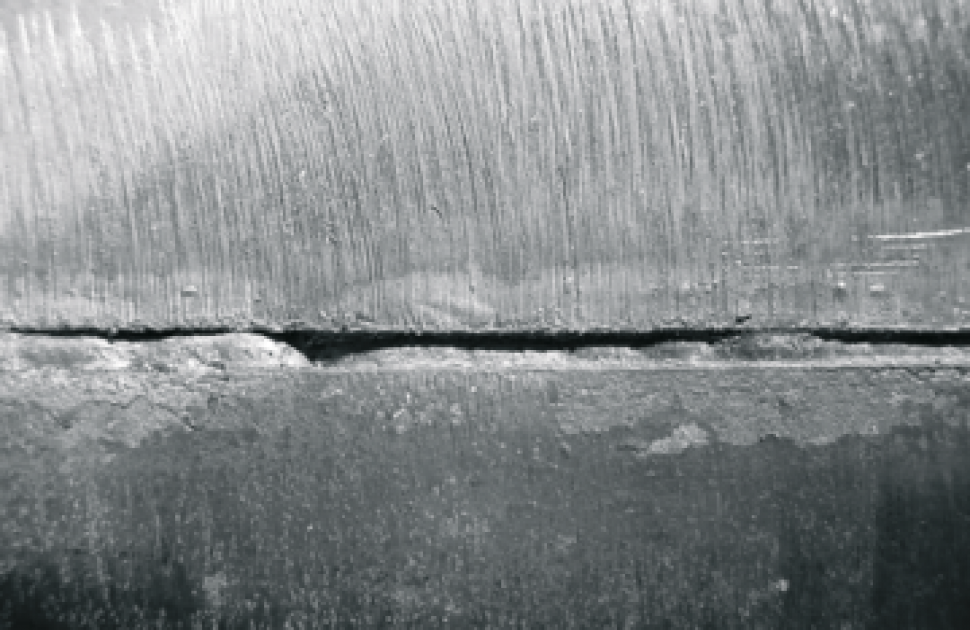Preventing Weld Undercut Made Easy: Trick Techniques Unveiled
Recognizing the Causes and Solutions for Undercut Welding in Steel Manufacture Processes
In the realm of metal fabrication processes, the occurrence of undercut welding positions a considerable obstacle that requires a thorough understanding of its reasons and sensible solutions. The intricate interplay of numerous variables during welding operations can result in this undesirable phenomenon, impacting the architectural honesty and total high quality of the bonded joints - Preventing weld undercut. By studying the source of undercut welding and checking out effective remedial measures, makers can raise the criterion of their handiwork and make sure the production of flawless steel elements
Typical Reasons For Undercut Welding
Frequently forgotten in steel construction, undercut welding happens due to various elements that demand meticulous interest and experience to be effectively reduced. Furthermore, inappropriate welding strategies, such as making use of the incorrect welding angle or travel speed, can likewise add to undercut formation. The selection of welding criteria, such as voltage, existing, and cable feed speed, plays a significant role in the event of undercut welding.
Influence of Incorrect Welding Parameters
Imprecise welding specifications can substantially jeopardize the stability and quality of bonded joints in steel construction processes. The influence of wrong welding parameters shows up in numerous methods, resulting in architectural weak points and problems in the bonded elements. One vital facet impacted by improper welding criteria is the penetration depth of the weld. Inadequate heat input as a result of low welding currents or excessively high travel rates can lead to poor combination between the base steels, leading to insufficient joint penetration and damaged bonds. Conversely, extreme warm input triggered by high welding currents or slow-moving travel rates can result in excessive and burn-through support, creating a weak and unstable weld framework. Additionally, inaccurate criteria such as incorrect voltage setups or wrong electrode angles can contribute to irregular weld grain profiles, absence of blend, and enhanced opportunities of defects like undercutting. Precise interest to welding criteria is paramount to guarantee the production of top notch welds with the wanted mechanical residential or commercial properties and structural integrity.
Result of Improper Lantern Angle
Inappropriate torch angle in welding operations can significantly influence the high quality and stability of the last weld joints in steel manufacture procedures. The torch angle plays an important role in determining the warmth input and distribution throughout welding. When the lantern angle is incorrect, problems such as undercutting can emerge. Undercutting is a common welding flaw where a groove develops along the weld toe, weakening the joint and endangering its structural honesty.
A torch angle that is as well high can result in not enough penetration, incomplete combination, and increased spatter. On the other hand, a lantern angle that is also shallow can result in excessive penetration, burn-through, and distortion of the base product. Preventing weld undercut. Correct torch angle is vital for making certain consistent weld high quality, stamina, and look
To stop undercutting and various other issues caused by incorrect lantern angles, welders need to be educated to preserve the correct torch angle throughout the welding process. Routine tracking and modification of lantern angles throughout welding can aid attain audio welds with marginal flaws.
Duty of Inadequate Welding Strategies

Another element of insufficient welding methods is incorrect weld preparation. Inadequate cleaning of browse this site the base steels, wrong joint layout, or insufficient side prep work can all add to damage welding. In addition, poor securing gas insurance coverage or using the wrong sort of gas can cause insufficient blend and the development of undercut problems.
To deal with the role of poor welding methods in metal fabrication procedures, it is crucial to give comprehensive training for welders. Proper education on welding parameters, joint prep work, and protecting gas selection can aid stop undercut welding and guarantee top quality welds in steel construction jobs.
Efficient Solutions for Undercut Welding
Addressing undercut welding in steel fabrication calls for executing effective options to enhance weld top quality and structural honesty. One of the primary remedies to fight undercut is Going Here to readjust welding specifications such as voltage, existing, and travel rate to guarantee correct heat input and combination. By fine-tuning these setups, welders can stop extreme melting of the base steel and filler material, minimizing the likelihood of undercut development.
In addition, proper joint prep work is crucial in stopping undercut. Ensuring clean base metal surfaces cost-free of contaminants and utilizing the ideal bevel angle can help promote much better weld infiltration and lower the risk of undercut - Preventing weld undercut. Utilizing appropriate welding strategies, such as oscillating the torch or weaving, can also help in dispersing warmth equally and filling the weld joint sufficiently, lessening the opportunity of undercut issues
Furthermore, selecting the correct welding consumables, including electrodes and filler metals, is vital in alleviating undercut. Utilizing materials with ideal chemical compositions and mechanical homes can add to achieving sound welds with minimal undercut. Regular inspection and quality assurance measures should also be implemented to detect and address undercut issues without delay, making sure the general stability of fabricated steel parts.

Final Thought
To conclude, understanding the reasons and remedies for undercut welding in steel fabrication processes is important for achieving high-quality welds. By resolving usual causes such as wrong welding criteria, incorrect lantern angle, and insufficient welding techniques, welders can prevent damaging and make sure strong, durable welds. It is important to focus on these elements and apply efficient solutions to enhance the overall welding procedure and final item quality.
